Just last week, I met Melinda Hunt, the director of the Hart Island Project, which assists families and individuals who have loved ones interred at the Potter’s Field there. She had come to Green-Wood for a meeting. A descendant of Samuel Osgood, the first postmaster general of the United States after the Constitution was ratified, she thought that Osgood had once been interred at the Brick Presbyterian Church but might have been removed to, and perhaps is now interred at, Green-Wood Cemetery.
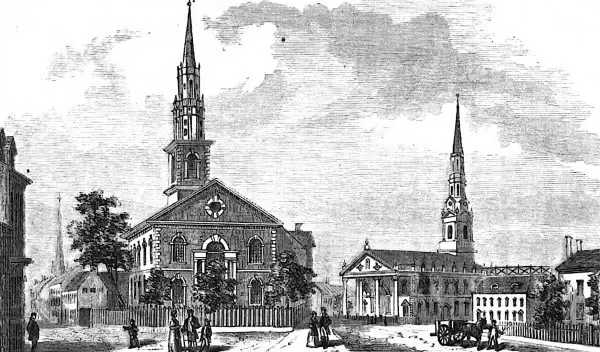
Green-Wood staff had already printed out a list for her of everyone who is interred in lot 6634. There were 23 names listed, 11 of whom were Osgoods. Two of them were named Samuel Osgood–one of whom was interred on June 12, 1856, the other interred on December 14, 1862. I was happy to do what I could to figure out if one of the Samuel Osgoods who is interred at Green-Wood was the United States’ first postmaster under the new Constitution.
As I looked at the lot list, I noticed that quite a few of the individuals interred in that lot–10 to be exact–were interred on the same date: June 12, 1856. This struck me as significant: it indicated to me that these 10 likely were “removals,” individuals who had died over a period of years and had been interred elsewhere, but were then reinterred at Green-Wood years after their deaths. Barring a massive tragedy, 10 members of one family don’t typically die, and get buried, on the same day. Rather, such matching dates, particularly in the mid-19th century, typically mean that these individuals had been interred in a churchyard, likely in Manhattan (but sometimes Brooklyn), then had had their remains moved to Green-Wood when the church and churchyard, again typically in lower Manhattan, were sold off for commercial development. This also was typically followed by a new church being built farther uptown, near the residential areas to which its congregants had moved.
Now I wanted to find out about this Samuel Osgood. Who was he? It soon became clear that he was a fascinating historical figure. Here is an image of him that hangs in the United States Capitol:
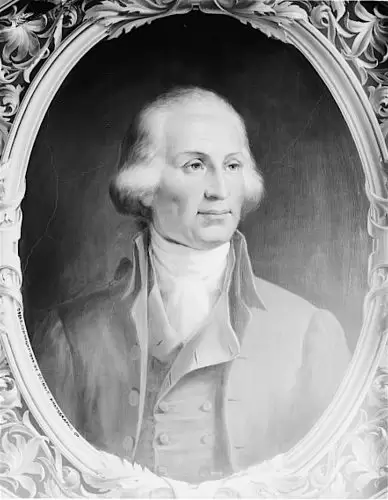
Samuel Osgood was born in 1747 (or, by some accounts, 1748) in Andover, Massachusetts. In 1770, he graduated from Harvard College, having studied theology. During the Revolutionary War, Harvard’s library was secretly stored in the house where he had been born–a house that still stands as an historic site, the Samuel Osgood House. He served in the Provincial Congress and began his Revolutionary War military service as a captain of Minute Men, leading his company in fighting the British at Lexington and Concord. During the Siege of Boston, he was promoted to major and given command of a brigade. He soon was promoted to colonel but, with the successful end of the siege, he resigned his commission and returned to service in the Provincial Congress. He then served in the Massachusetts senate, as a delegate to the Continental Congress, as a Massachusetts judge, and as a commissioner of the United States Treasury. When, in 1789, President George Washington was inaugurated, Osgood’s house, considered the finest residence in all of New York City, became the first presidential mansion.
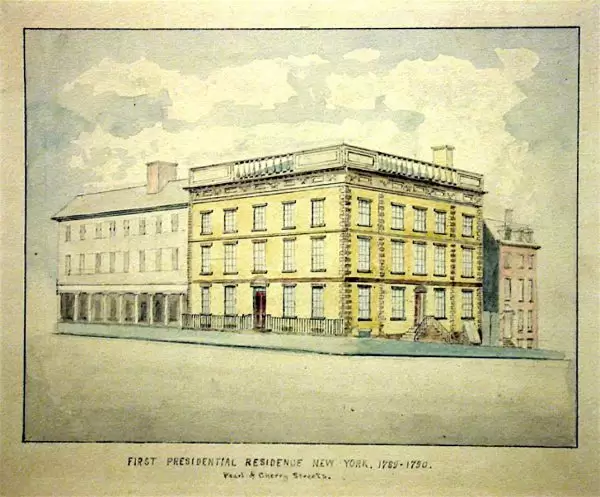
That same year, Washington appointed Osgood the first postmaster general under the new United States Constitution. Osgood served in that position for the next two years, until the nation’s capital was moved to Philadelphia, when Osgood chose to stay in New York City and was elected speaker of the New York State Assembly. The list of the incorporators of New York City’s public schools is headed by Samuel Osgood and DeWitt Clinton (also interred at Green-Wood). In 1803, President Thomas Jefferson appointed Osgood Naval Officer of the Port of New York; he held that position until his death in 1813. Osgood also was named the first president of the City Bank of New York (now known as Citibank) in the last year of his life. That is quite a resume!
So what happened to Samuel Osgood’s remains? According to the Biographical Directory of the United States Congress, “interment [was] in the Brick Presbyterian Church, Nassau and Beekman Streets (now Fifth Avenue and Thirty-seventh Street), New York City.” Wikipedia, in what otherwise seems to be a careful biography, reports somewhat confusedly: “He died at home (3 Cherry Street) in New York City in 1813 and was buried in the Brick Presbyterian Church in Manhattan. The church is located at what is now the corner of Fifth Avenue and Thirty-seventh Street.” Appleton’s Cyclopedia of American Biography reports in its biography of Samuel Osgood that he was buried in a church at the corner of Nassau and Beekman Streets. A website, Political Graveyard, also lists Samuel Osgood’s final resting place as the Brick Presbyterian Church in “Manhattan, N.Y.”
Certainly there is no question that Samuel Osgood, upon his death in 1813, was in fact interred in the churchyard of the Brick Presbyterian Church. That, however, was downtown in 1813, just east of City Hall Park–not at Fifth Avenue and 37th Street. The issue is whether his remains now lie there now–which struck me as extremely unlikely. The practice in 19th century Manhattan was to remove bodies from a church’s graveyard when the church’s land was sold–either by notice to congregants to claim their family’s bodies, by collective action to move the bodies to another burial ground, or by disinterring the remains and carting them off to the Potter’s Field.
So I researched Brick Presbyterian Church–and discovered that it was founded in 1758 at Beekman and Nassau Streets, just east of where New York City’s City Hall now stands. Here is the location, in a Google map:
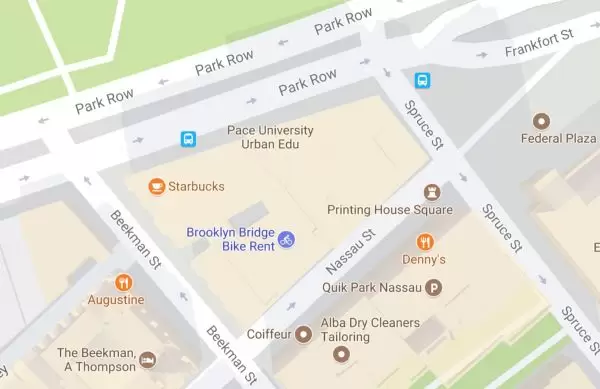
And this is a satellite image of the same block:

Note that Samuel Osgood died in 1813. If he was indeed interred, upon his death, at the Brick Presbyterian Church, it would have been at the church’s first location, just to the east of Park Row–where the church and churchyard would remain until 1856, when it sold off its land there. That Brick Presbyterian Church moved uptown in 1858 to a building at 37th Street and Fifth Avenue in Manhattan. It later moved farther uptown to its current location, 91st Street and Park Avenue. So, how could Samuel Osgood, in 2017, still be interred at either of those first two locations–places where the Brick Presbyterian Church no longer had any presence? I very much doubted it.
My next step was to check Green-Wood’s chronological books for June 12, 1856. All interments at Green-Wood, from the very first ones, in 1840, through those in 1937, were recorded by hand in large ledgers as they occurred. Starting with the consecutive number of the burial, the first and last names of the deceased were then noted, the lot and grave, then the place of birth (“nativity”), marital status, age at death, late residence, place of death, cause of death, and undertaker’s name. Though I have long thrilled at opening up these ancient ledgers to see the very neat–and very old–handwriting, that is no longer necessary. Just a few weeks ago, thanks to the efforts and the arrangements of Green-Wood Archivist Tony Cucchiara, scans of these ledgers were made and went up on Green-Wood’s office computers. This allows for quicker access as well as enlargement of the handwriting–while at the same time avoiding wear and tear on the original ledgers. So I looked at the entries for June 12, 1856 on my computer. There, starting with burial 48,365, were listed 10 names of individuals who had been interred in lot 6634 on that date. A notation appeared for each of the names listed, “Removal from New York City.” And, as is the case with such 19th century removals, no other information was recorded in the ledger–information concerning date of death, age at death, last residence, etc. was not transferred by the original graveyard when the bodies were brought to Green-Wood.
I then searched The New York Times online for “Brick Presbyterian Church.” Here I found gold! On May 12, 1856, an article appeared in that newspaper reporting that the church was going to sell its lots: “The church has for a long time been desirous of selling this property, in order that with the proceeds of it they might erect a new Church in a more convenient locality.” And, an announcement in the same issue of The Times specified that an auction would be held just two days later, on May 14, 1856, of the property of the Brick Church, with a minimum bid requirement of $225,000:
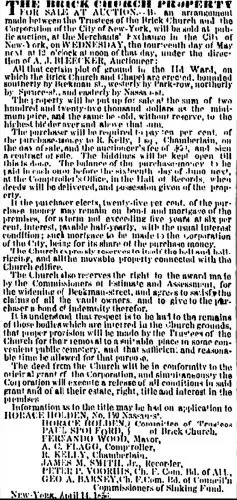
As described, the property contained a church and chapel. It was bounded by Beekman Street, Park Row, Spruce and Nassau Streets. The church would be keeping its bell and the bell rigging–that was not to be a part of the auction. The church “agrees to satisfy the claims of all the vault owners.” The auction notice continued:
It is understood that respect is to be had to the remains of those bodies which are interred in the Church grounds, that proper provision will be made by the Trustees of the Church for the removal to a suitable place in some convenient public cemetery, and that sufficient and reasonable time be allowed for that purpose.
Because the church’s deed forbade the use of the land for “private, secular uses,” the church agreed to pay New York City one-fourth of the selling price for the city to waive that provision. Notably, The New York Times, then led by Henry Raymond (who also is interred at Green-Wood) was the successful bidder at auction. The Times erected a new headquarters building on much of that square block.
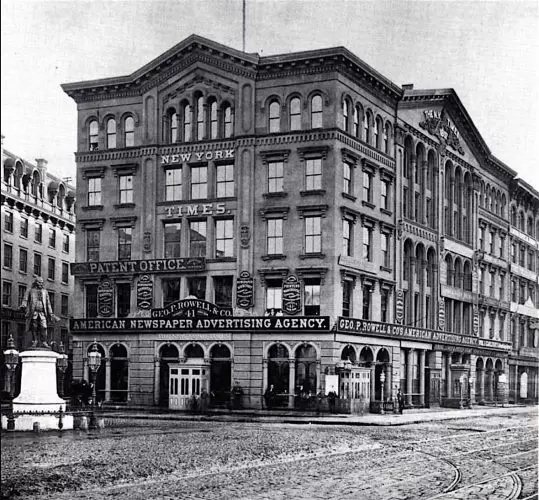
So what do we know? Samuel Osgood, former postmaster general of the United States, died in 1813 and was interred in the churchyard of the Brick Presbyterian Church at Nassau and Spruce Streets. But, on May 12, 1856, the church announced that is was selling off its church and churchyard at auction on May 14, just two days later. The church’s announcement added that it would make “proper provision” for the removal of those interred there to “some convenient public cemetery.” Note that the church was not offering to move bodies uptown to wherever its new location might be. And, importantly, this was all on a compressed schedule: announcement May 12, sale May 14. Undoubtedly the winning bidder at the auction, The New York Times, was eager to get construction going. Then, just a month after the news broke and the auction notice appeared, a man named Samuel Osgood and the others were removed from their burial places in New York City and interred at Green-Wood. It seems to me, given this tight schedule, that Postmaster General Samuel Osgood was interred upon his death in 1813 at in the Brick Presbyterian Church churchyard, that the church and churchyard were sold on May 14, 1856, and that the remains of Samuel Osgood and 9 other members of his family were removed to Green-Wood Cemetery on June 12, 1856. .
A few final notes supporting this conclusion. Samuel Osgood married twice. His widow was Mary (or Maria) Browne Franklin Osgood. On the day Samuel Osgood was interred at Green-Wood in lot 6634, June 12, 1856, a Mary Osgood was interred with him; she was also a removal from New York City. Further, a fellow by the name of Franklin Clinton was also interred in that lot on the same date. It seems that Franklin was a family name from Mary’s side of the family; one son of Samuel and Mary was named Walter Franklin Osgood and there is a Walter F. (Franklin?) Osgood in lot 6634 who was part of the June 12, 1856 removal from New York City to Green-Wood. In addition, on a 19th-century burial order for lot 6634, in Green-Wood’s archives, the lot at Green-Wood is referred to by a member of the family as “Samuel Osgood’s lot.” This would seem to confirm that Samuel was considered the most important person interred there.
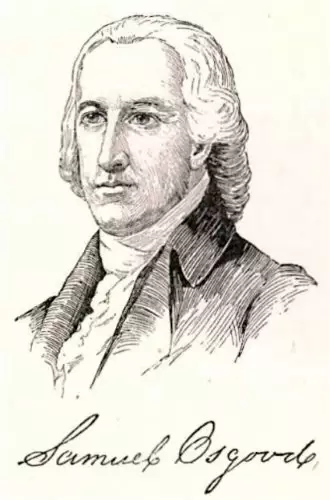
Finally, checking Green-Wood’s correspondence file for lot 6634, I discovered a letter dated October 28, 2006, from Kevin Jack, who stated that he was “researching past speakers of the New York State Assembly, including three that I believe are interred at your cemetery.” The first name listed on Mr. Jack’s letter was Samuel Osgood. Jack added: “I believe he was originally buried at the Brick Presbyterian Church at Beekman & Nassau Streets, and the remains were moved to Green-Wood when the Brick Church moved to 5th Ave. & 37th Street.” That would seem to be correct!
UPDATE: On the basis of the research above, the Office of the Historian, House of Representatives, has just updated Samuel Osgood’s biography in the Biographical Dictionary of the United States Congress to state that he was reinterred at Green-Wood on June 12, 1856. Good to get it right!
I enjoyed reading this piece of history. The photo with the status of Ben Franklin took me aback because that statue is still there! Behind Ben and off the left side of the photo now is Pace University.
Fascinating article! Many thanks Jeff. Like Melinda Hunt, I’m also a direct descendant of Samuel Osgood. My son Is here with me and we just enjoyed reading it together. Your article told me more about old Samuel than I had known before, in particular that he was a Captain of militia at Lexington and Concord on April 19, 1775. Present at the creation. One day soon I’ll visit Lot 6634 at Green-wood Cemetery as well as his house in Andover.
Thanks, David! Happy to help you better understand your ancestors.
I enjoyed the detailed information on Samuel Osgood. As I as well am a direct decendant. I had the opportunity to read letters that were in the Madison Library in DC. He was very accomplished individual.
Very well done. Samuel Osgood married the widowed Maria (sometimes Mary) Bowne Franklin, a descendant of the early Flushing, NY Quakers, John and Hannah Feake Bowne whose 1661 Bowne House still stands and is part of NYC’s Historic House Trust. After Samuel Osgood married Maria Bowne Franklin he moved into the the Walter Franklin House built by Maria’s first husband. The Franklin House, later known as the Samuel Osgood House, was located near the Brick Presbyterian Church and was selected as George Washington’s first presidential residence in 1789. Maria’s cousin Thomas Burling, a well-known Quaker cabinet maker created the furnishings for the first presidential “palace” as some called the Franklin House. Congress paid for and owned all the Burling pieces which were moved to the next presidential residence in Philadelphia.
Thanks, Kate, for sharing this information. Fascinating!